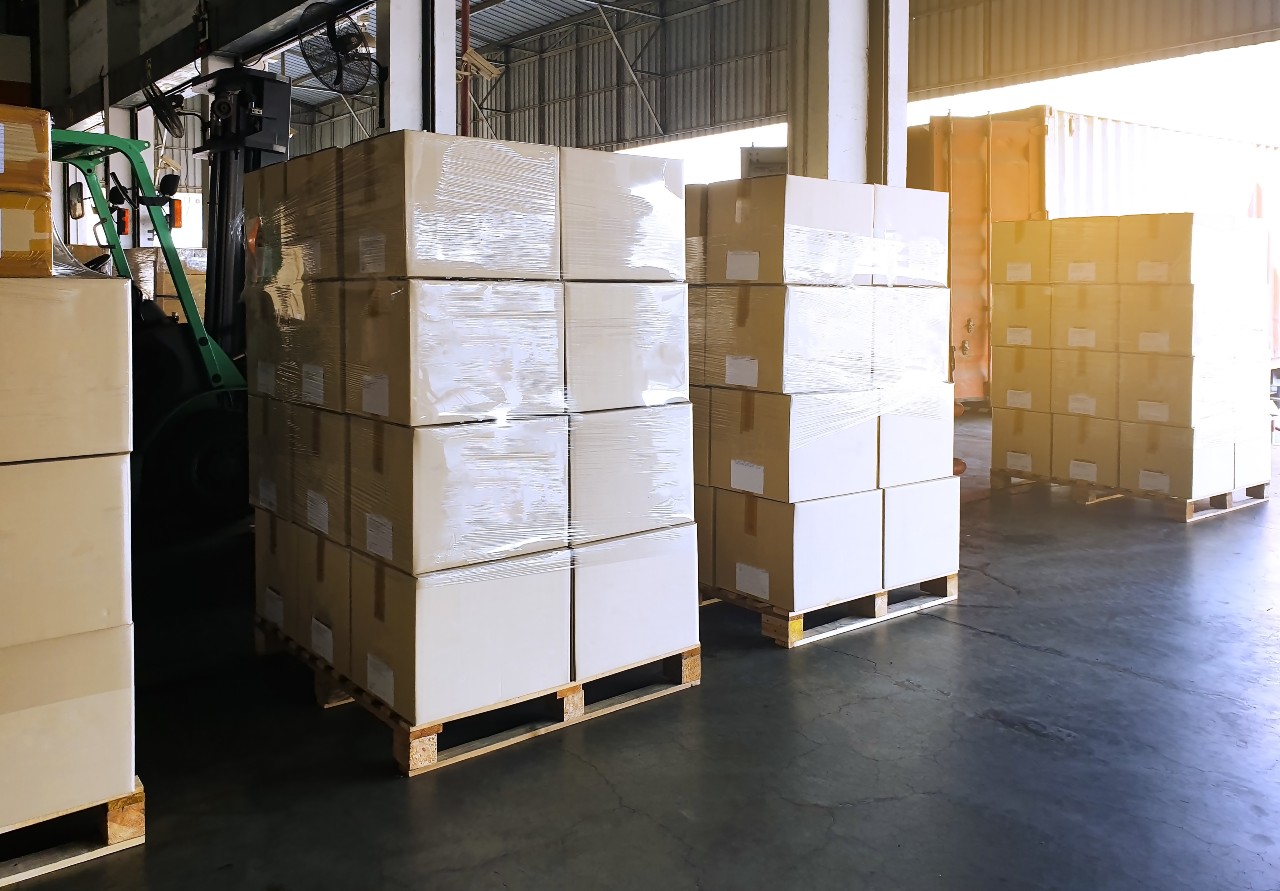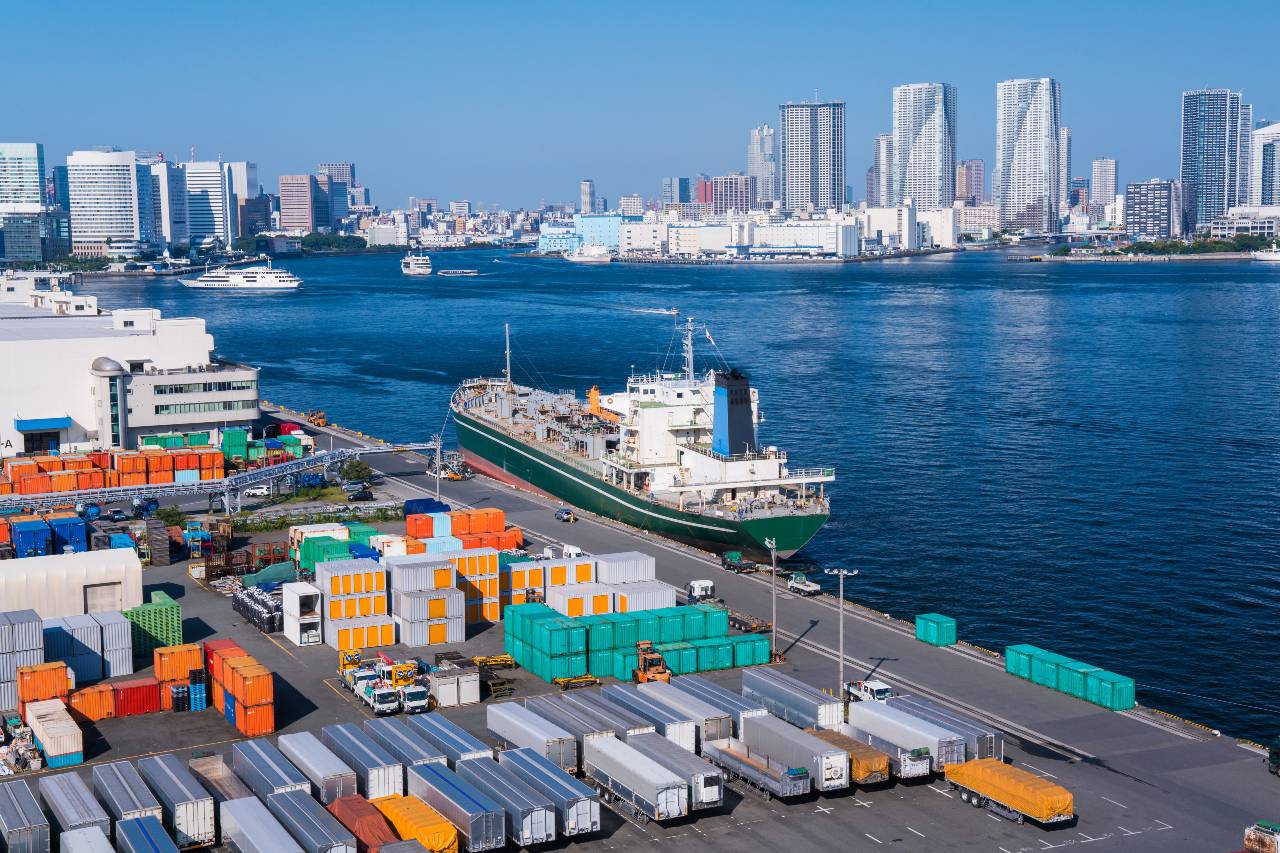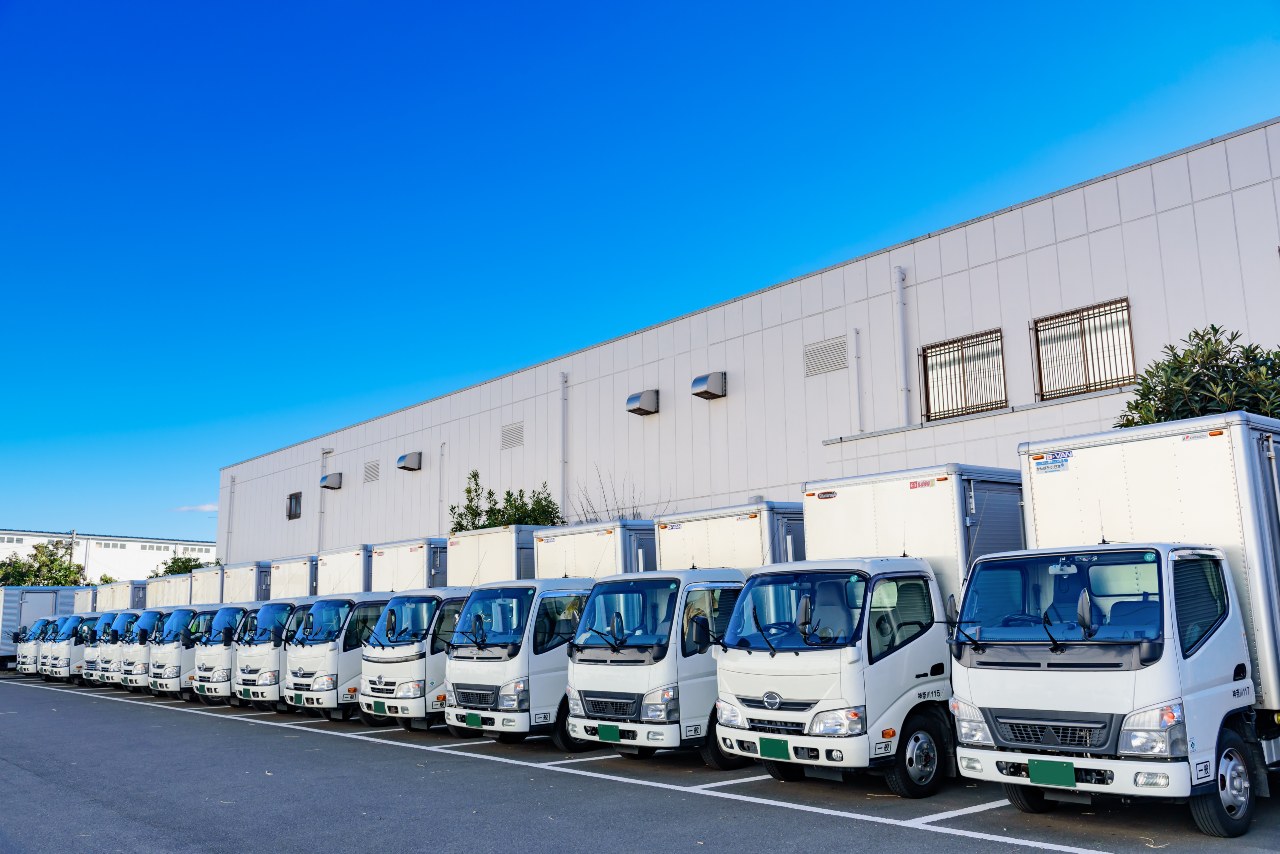After taking the bold decision to enter the Japanese ecommerce market, the first challenge you’ll probably be wrestling with is how to practically do this.
Warehousing, deliveries, launching your products on an ecommerce platform, setting up a post-purchase and customer service system and more are all real logistical hurdles you’ll need to overcome before you can start actually selling your products to Japanese customers.
For merchants planning the logistics of their Japanese ecommerce strategy, we’ve outlined the most important considerations to make so you don’t let your new Japanese customers down on the logistics and fulfilment front.
Table of Contents
The Japanese Delivery Market
Japanese consumers have extremely high expectations for home delivery services. This includes everything from initial delivery, redelivery (if the recipient is not in when their package arrives), designated delivery slots (which include the exact hour of delivery), and the ability to pick up packages from certain locations such as convenience stores.
Add to this the widespread offering of next-day deliveries, optional payment on delivery, easy exchange and return options, and comprehensive customer service, and you have a rough idea of the standards you need to meet.
Most countries in the world have a decent delivery market these days, to support the growth of online shopping and deliveries, but things seem to run a little more smoothly in Japan. And people will take notice of packages that are even slightly late or a home delivery service that doesn’t conform to the nation’s high standards of customer service and hospitality.
All this contributes to an environment of comfort and accessibility for the consumer and the burden is on you as a brand to make sure you’re using a system that meets all the needs of your customers.
As such, many international merchants choose to reduce some of the pressure on themselves by going with the Amazon FBA system, offering full-service freight management, multichannel order fulfilment, and return management for online orders. However, as we’ll explore below, there are a few other options on the table worth considering.
Top Fulfillment Options in Japan

The delivery market is dominated by a few major players. Understanding who these are is the best place to start when figuring out a plan for your ecommerce logistics in Japan.
Fulfilment by Amazon
By far the simplest options for merchants who are looking to reduce the stress of organizing logistics for Japan, Amazon’s FBA system offers several benefits. And if you’re already selling through the platform in your own market, it’s a logical option when picking your Japanese online marketplace of choice.
When someone orders and pays for one of your products through the Amazon Japan platform, they will process the transaction for you and collect and ship out your product from their warehouse. They will handle packaging and make sure that the customer is notified of the parcel’s journey progress.
The process works like this:
- Apply for merchant status and register your business
- Send your products to Amazon’s FBA warehouse (in Japan)
- Let Amazon categorize and store your products
- Wait for customers to buy your products
- Amazon ships your product out
- Amazon handles most of the customer service (more on this below!)
- You receive payment
This sidesteps many of the complicated logistical processes that are hard to set up for the first time, such as storing your products locally and dealing with Japanese courier companies. However, the more you store in Amazon’s warehouses, the more you’ll need to pay.
To learn more about Amazon’s FBA option, take a look at our popular blog: How to Become an Amazon Seller in Japan – FBA, Account Set-up, Logistics and More!
Rakuten Superlogistics
A rival to Amazon’s FBA system, Rakuten Super Logistics functions in a very similar way. International merchants can opt for in-country warehousing with Rakuten Super Logistics who will handle product storage and order fulfilment as well as basic return management.
The cost you’ll pay for all this will depend on the types of products you are shipping, sales volumes, and current storage costs. You don’t have to sell on Rakuten either to use this service due to the multichannel fulfilment feature that’s very similar to the one offered by Amazon FBA.
If you want more advice on what Rakuten is and how to get set up, check out our post: How to Sell on Rakuten Japan – Top 10 FAQs Answered
Third-Party Logistics (3PL/TPL)
There are also several domestic shipping and delivery companies whose services have evolved to support ecommerce businesses and the growth of online shopping. If you have your own storage facility or you are partnering with someone who does, there are countless courier services to choose from when planning your logistics for Japan.
Many of these options will offer excellent reliability and aptitude for meeting the delivery demands of your Japanese customers. The three biggest names in the game are:
- Yamato Transport
- Sagawa
- Japan Post
The most important thing when working with external delivery companies like these is setting up a reliable long-term storage and inventory management system in Japan as the hub for integrating seamlessly with a delivery company.
HB Pro Tip: Whatever option you choose, we recommend choosing a system that allows for easy in-country warehousing. This is simply one of the best ways to ensure your customer doesn’t suffer severe delays from cross-border deliveries.
Finding an Importer of Record to Handle Customs for You

Unlike other regions, Japanese customs don’t permit foreign entities to act as the Importer of Record (IOR). This means you’ll need to find someone in the country to take on this role for you, who is essentially responsible for all the Customs duties and taxes.
Amazon, Rakuten or any other ecommerce marketplace won’t be able to act as the IOR for you either, and you’ll need to find a third party company/person that will act as your Importer of Record. The difficulty of this task will depend on the kind of products you want to sell.
HB Pro Tip: For standard items like clothes, for example, there are plenty of options, however, more specialised products like medical equipment, food, alcohol or even cosmetics might require a special company to assist you here. If you’re looking for an Importer of Record (IOR) to help with your logistics in Japan, let us know and we might be able to put you in touch with someone in our network.
Getting Set Up on Ecommerce Platforms with a Merchant Account

If you’re already selling on Amazon somewhere else, getting set up on Amazon Seller Central with a new (or connected) account for Japan shouldn’t be too hard. The interface and process are pretty much the same as it is in other countries.
The added bonus is that you’ll also be automatically registered with the FBA program as soon as you sign up, getting you well on the way to processing orders.
If you’re using platforms like Rakuten or Yahoo! Shopping, however, you may well need a bit of help establishing your accounts initially. You will be required to first apply for the right to sell on the marketplace and will need to meet a few more requirements during the onboarding process. These are:
- Find a local partner to work with
- Register your business in Japan
- Open a local bank account
This process has become increasingly easier over time with more international merchants choosing to sell in Japan on a non-Amazon platform. However, it can often help to have Japanese native speakers on hand to communicate with the platform on your behalf, handle more technical aspects, or help guide you through the registration process.
If you’re thinking about using a platform like Shopify to set up your web store to offer more functionality and branding opportunities, things will work a little differently as you won’t have access to any existing logistical, delivery or customer service support. Nevertheless, it’s a viable option for merchants who want to take more control into their own hands — and Amazon’s FBA is still a possibility if you don’t want to work with a third-party provider or set up your own warehouse solution.
Still not sure which platform you want to sell on? Explore the pros and cons in our blog: Best Ecommerce Platforms in Japan – Are Some Sites Better than Others?
Building Your Storefront and Localizing Your Product Listings

After registering a basic account, you may need to invest a significant amount of time into building your digital storefront as many platforms (especially Rakuten) act like online shopping malls where each brand has its own dedicated, uniquely designed page.
This can be great for optimizing your pages for better conversion but quite a burden if all you want to do is start selling as soon as humanly possible.
If you don’t have the time or resources to build a non-generic store page, you might suffer from low sales conversions from Japanese consumers who expect a greater amount of presentation and personalisation in their online shopping experiences.
Even on Amazon where all products are displayed on the same page of search results, in a style that has often been compared with vending machines, there is still the need to create perfectly crafted product pages that have the right images and descriptions to promote your items in a way that appeals to Japanese consumers.
Remember, as we’ve mentioned quite a lot in previous blogs, the motivations and preferences of Japanese shoppers can vary quite significantly to what you’re used to.
While people at home might buy your product because you seem unique or innovative in some way, customers in Japan might enjoy your product because you seem more commonplace, which is another way of saying you’ve been tried and tested by the masses and accepted as a reliable product. In Japan, this can be much more important.
For a more detailed comparison of the top three ecommerce platforms in Japan and how to get set up, check out our post: Japan Ecommerce – Amazon, Rakuten or Yahoo!?
Accepting Multiple Payment Options

While cash is still widely used in Japan, cards have become the most common payment method for online purchases, making up 65%.
Credit cards are more popular than debit, as many standard debit cards from Japanese banks are not compatible with online payments, or several types of offline payments for that matter, as you’ll quickly realise if you spend any significant amount of time here.
There are also a number of alternative payment options that have become incredibly popular in recent years, such as cash on delivery and even instalment payments where customers can spread their cost of the purchase over several weeks or months. These will largely depend on participating banks and partnerships with ecommerce companies.
A growing collection of card schemes also offer Japanese shoppers many different ways to pay, such as Pay Easy, Konbini, LINE Pay, and PayPay.
While you don’t need to offer every payment option under the rising sun, it’s important to consider that payment options influence the kind of experiences customers have when buying your products and many shoppers want to build up loyalty scheme points gained from making purchases with particular cards or payment options.
HB Pro Tip: Payment gateways must always be seamless and cater to the various methods Japanese shoppers prefer to use, including card types and local payment schemes — it’s always worth checking which options your ecommerce marketplace or hosted ecommerce platform can help you process.
Acknowledge the Role Customer Service Plays in Ecommerce Logistics in Japan

It’s best to build a customer service strategy early on. It is an underestimated component of logistics in Japan and should actually be baked into your operations from the start so you don’t ever risk falling short of the expected standard here. A few more reasons to do this are:
- Even if you do go with Amazon Japan as your platform of choice, they don’t cover absolutely everything customer service related for you. If you get any requests for returns or direct questions or feedback about your products, you will need to handle this yourself.
- Rakuten states that merchants must be highly proficient in Japanese in order to handle everything from customer support, page maintenance, order and return management, marketing campaigns, and operating the shop’s interface.
- Good customer service is a key driver in customer loyalty on all platforms and avoiding negative feedback influencing the decisions of new customers (who care a lot about the experiences other shoppers have had with your brand) should be a paramount concern if you’re a foreign brand already fighting an uphill battle.
The Culture of Omotenashi
In Japan, there is a presumption that brands and sellers will put themselves at the full service of their customers to help them in any way possible. This can mean answering inquiries comprehensively through email or telephone about product quality, delivery times, or returns.
Many believe this stems from a deep-rooted culture of ‘Omotenashi’, which relates to the importance Japanese people place on hospitality and offering extreme care to customers and guests by anticipating their needs.
As such, we recommend doing whatever you can to establish a customer strategy early on as part of your ecommerce logistics set-up plan. This can also help you to build greater trust with your customers as you deliver the same level of Japanese customer service they expect. Essentially, this requires you to have native Japanese speakers on your team or work with a local partner who offers Japanese language capabilities.
Planning Your Logistics in Japan – Final Thoughts

Whening figuring out how you’re going to handle your logistics in Japan, we always recommend using in-country warehousing of some kind, whether that’s using independent solutions for long-term storage and fulfilling the “last mile” (to the customer) via a reliable delivery service, or choosing an option like Amazon FBA or Rakuten Super Logistics.
This not only helps you to reduce shipping costs and ensure faster and more reliable deliveries, but it will remove the various complications often caused by coordinating between cross-border shipping companies that bring your product into Japan and the service providers you need to finally deliver your items to the end-user.
Need help setting up your ecommerce business in Japan? Let’s chat on how we can help.